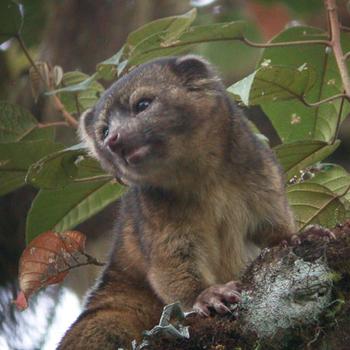This week everyone from CNN to FOX (and of course a number of people on Facebook) seemed to be oohing and ahhing over a just-discovered South American mammal with a teddy bear face.

The olinguito, which is in the raccoon family, was recently identified and named by scientists and only lives in the cloud forests of Colombia and Ecuador. This is awesome for a number of reasons.
First, finding a new mammal, and one in the carnivore family, is extremely rare no matter where you are in the world — and hasn’t happened in the Western Hemisphere in 35 years. In of itself, the olinguito adds to our knowledge of the world and the records of science.
Second, this amazingly cute guy got Colombia in the news for something other than drugs, violence, or (no, not rock ‘n’ roll) the negotiations between the FARC and the Colombian government.
If it were up to me, I might appoint the olinguito Colombia’s official goodwill ambassador to the world.
Discovering a new mammal species is surprising, but perhaps it is not as surprising that it calls Colombia home.
Colombia is the most-biologically dense country in the world – it has more species of plants and animals per square mile than any other country in the world – and is second only to massive Brazil in total numbers of species.
This is mostly because of the variety of environments and ecoregions in Colombia: the ocean and coastal habitats of both the Caribbean and the Pacific, the deserts in the north, the dry plains crisscrossed with giant rivers in the east, the rolling green hills of the interior, the high mountains and forests of the Andes, and the Amazon River Basin and Amazon Rainforest.
And in all corners of Colombia, new species, from tiny insects, rare plants, and cute mammals, are being added all the time. I am glad for many reasons — including the chance to share adorable animal photos — that the olinguito calls Colombia home.
Read more about the olinguito and the story of its discovery from this article from National Geographic.

